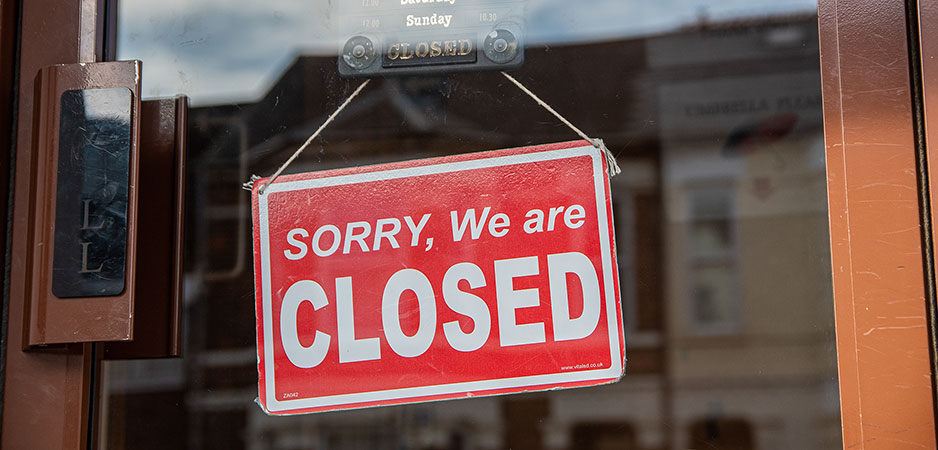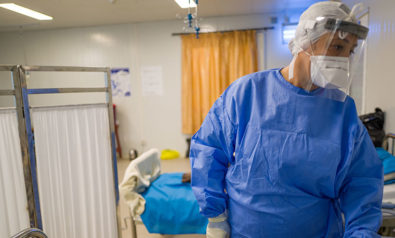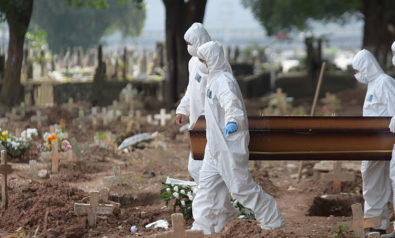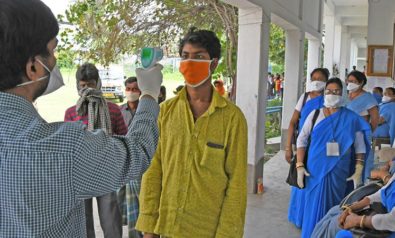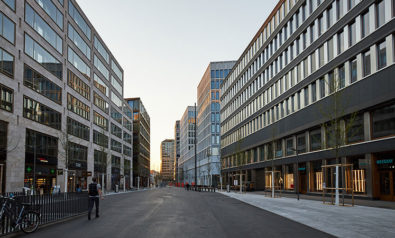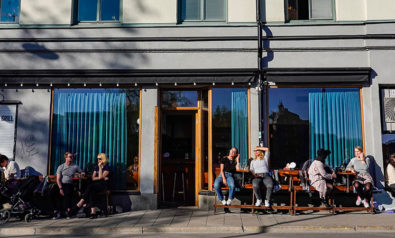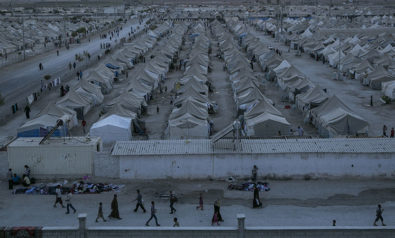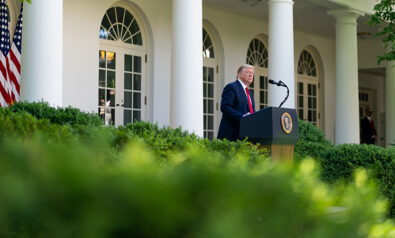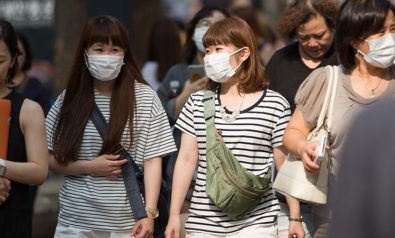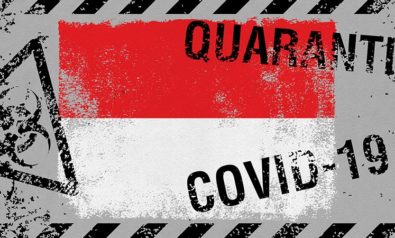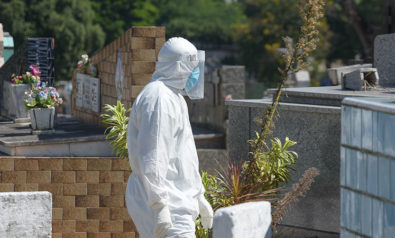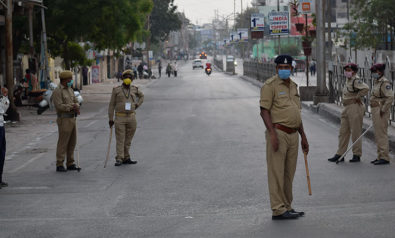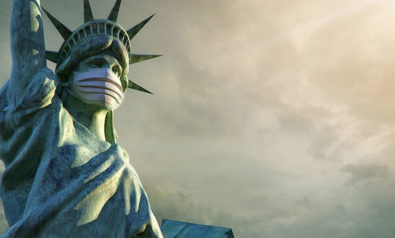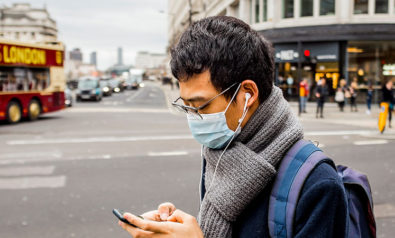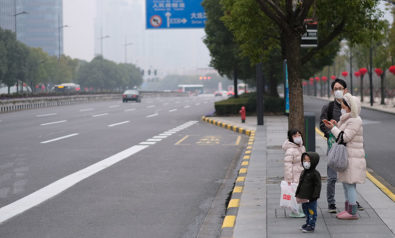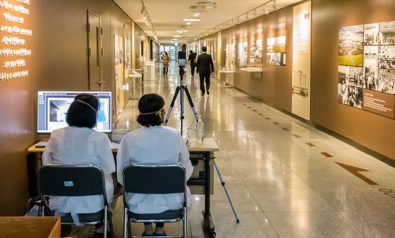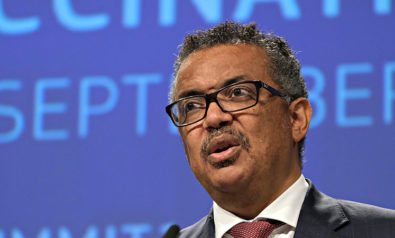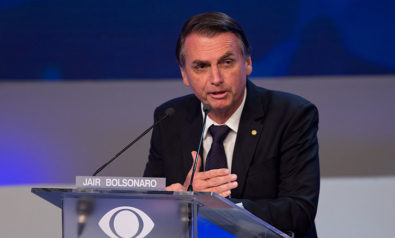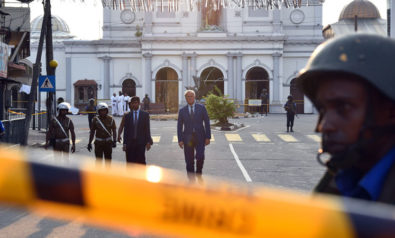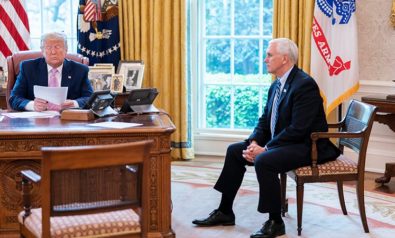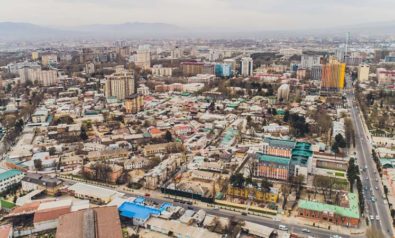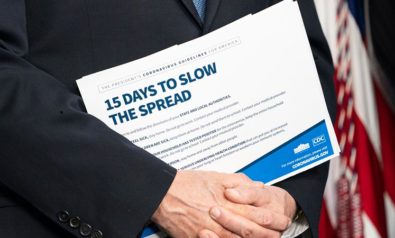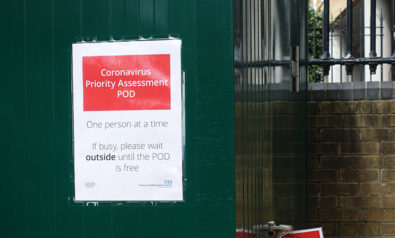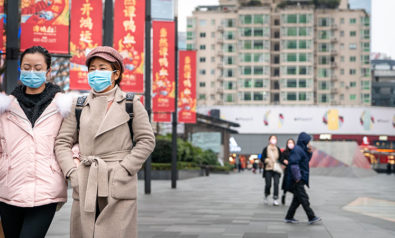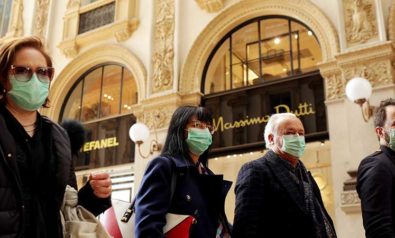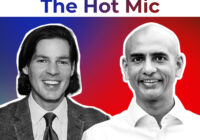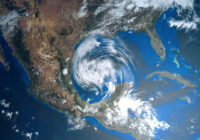On March 9, I wrote that the British government is not just failing to safeguard its people, but is willing to trade lives for economic stability and an air of normality. Since then, the number of reported infections and deaths has risen to 5,863 and 289 respectively at the time of writing, and the government has modified its tactics.
People were at first encouraged to work from home and to avoid pubs, clubs and crowds. On March 20, places to eat and drink and entertain were told to close. Anyone who felt ill was advised to isolate themselves for seven days; later, it was suggested they do so for two weeks. On March 18, Prime Minister Boris Johnson said tests for COVID-19 will increase from 5,000 per day to 25,000. Doctors and other National Health Service (NHS) staff, who until then were not being tested even if symptomatic, will now be prioritized. Schools have also closed to most pupils. The possibility of further, more stringent measures has been left open.
The British Government Is About to Fail on Coronavirus
These modifications do not amount to a complete volte-face. Neither social distancing nor isolation are compulsory. It will take about a month to reach the target of 25,000 tests a day so that, for the moment, the sick will not know if they have the virus unless they end up in hospital. This delay to treatment may reduce their chances of survival and puts families at risk. Schools remain open to the children of key workers, a category which in practice includes just about the entire public sector and anyone involved in food distribution and transport, as well as journalists, the clergy and morticians. Trains and buses are still running, though in smaller numbers, leaving many of them packed.
On March 19, at a news conference held at the Academy of Medical Science, the government’s chief scientist, Sir Patrick Vallance, and its chief medical officer, Professor Christopher Whitty, did not seem chastened in the least. Tactics evolve as new data comes in. Different opinions are welcome, Whitty said, provided they are expressed with courtesy. He went on to identify three categories of “critiques.” The first — that the government scientists have the right strategy but wrong timing — he described as legitimate. The other two comprise criticisms of a technical nature and demands that they should act to locate the virus, break transmission and end the outbreak. These last two critiques, he said, were not supported by science and did not fit the right theoretical framework.
This is a courteous way of saying that we won’t listen to you unless you think like us. Rather than stop the virus in its tracks, it is best to manage its spread throughout society. Otherwise the NHS will be overburdened, and herd immunity cannot be established. How else will life get back to normal, the economy rescued and the effects of subsequent viral waves mitigated?
Reluctance to Criticize
It is difficult to know for the moment if the measures introduced over the last few days are a fudge or a sop. It is possible that Whitty’s apparent sensitivity to criticism suggests he feels sidelined. Alternatively, it might be that the new measures are window dressing for Whitty’s “theoretical framework,” and that this remains firmly in place. The country is being guided by “the latest Government modelling,” The Daily Mail assured its readers on March 22.
Either way, an explanation for the extraordinary crisis Britain now faces is needed if there is to be any hope of remedial action. Part of the explanation is a belief in the superiority of Britain’s “mature” democracy and Johnson’s own personal laissez-faire approach to all facets of life. Another part is the government’s feeling that, after his recent electoral victory, a sizeable chunk of the population is still with the prime minister.
There is also a concern that the government cannot be seen to have lost credibility, let alone control. Before March 18, people were so doubtful about the advice issued, they had already begun to take matters into their own hands. Teachers were calling in sick. Parents were keeping their children at home. One private school after another decided to close down. And the education minister, Gavin Williamson, had resorted to threatening court action against the heads of some state schools if they took upon themselves to shut up shop.
A further part of the explanation is that while the government is considered fair game, there is a general reluctance to criticize Vallance and Whitty forcefully, directly and immediately. The men in question are thought to know their stuff, and few commentators want to be associated with the new right’s instinctive and pointless loathing of experts and science. A few critics, like Anthony Costello and John Ashton, have spoken out loudly and clearly — irrelevant and discourteous rants to Whitty’s ears. On the whole, though, the debate on the scientists’ easy-does-it approach sounds more like an academic seminar in which each participant is dependent upon every other for their reputation and station.
It has all been very restrained and gentle: “I’m not sure this is the best we can do”; “I worry that”; “another strategy might be”; “Do we have enough evidence”; “It is a measured approach”; and “We urge the government to reconsider.” Polly Toynbee, writing for The Guardian, demurred: “I can’t judge who’s right,” noting that trust in Whitty is very high. Even Richard Horton, editor-in-chief of The Lancet, pulled his punches. He acknowledges that the “best” scientists knew the bug was lethal (all the others did not?). “Something has gone wrong,” he told The Guardian, but “I don’t know why.”
There has been “a collective failure among politicians and perhaps even government experts to recognise the signals that Chinese and Italian scientists were sending,” Horton went on. But he knows Whitty and Vallance, he says, and “has the utmost respect” for them and the talented researchers whose support they draw on.
Led By Scientists
The government’s efforts to build up their scientists — the “best” of whom, it would seem, were already brimming with confidence — also makes it difficult to take a crack at them. When Johnson gives his briefings, he is flanked by Whitty and Vallance, stony-faced and gimlet-eyed. They stand there like high priests through whom the king communes with the gods. That the government response is “entirely science-led” is the refrain uttered by every minister at every opportunity.
Effusive articles about Whitty are seeded in the press. When it was pointed out that the government’s response was out of step with much of the rest of the world, the reply was that Britain is led by science, not by the kind of populist and ineffective measures peddled elsewhere. When more than 200 mathematicians, geneticists and other specialists wrote an open letter expressing their doubts, the BBC remarked that none of the signatories is a leading expert in the science of the spread of diseases.
The health secretary, Matt Hancock, in reply to such doubters, was more dismissive: “What we will do is listen to all the credible scientists and we will look at all the evidence.” When “ordinary” people wondered when schools will finally close, they were patronized: You might find it counterintuitive, they were told, but it really isn’t necessary and, in fact, would be counterproductive.
Treated with a deference that is almost feudal, the two chief scientists’ word and judgment has become irreproachable. They are free to indulge. Why shouldn’t they explore their own theoretical insights? Why shouldn’t they go for herd immunity, not through vaccination, but through exposure to a disease known to be deadly? Why not try out their own model? Why not blend epidemiology with behavioral science? Why not even pioneer a completely new way of managing pandemics, one that requires minimum intervention and is highly cost-effective?
No wonder they appear so authoritative even as they nonchalantly discard the most basic principles of disease control: stop people moving around, find out where the virus is, break the chains of transmission and find a cure or a vaccine.
Whitty and Vallance are right, and the rest of the world is wrong. They ignored China’s experience, the reports coming out of the country and the warnings issued by the World Health Organization. Instead, they preferred to model — to re-present the real world as mathematical symbols which are then manipulated to elucidate variables before being transposed back into their real-world counterparts. It is a pleasant enough pastime, but no substitute for effective government, sound judgment and nuanced decision-making, especially when time is short and lives are at stake.
Clopening
While they model, London and the rest of the country burn. Up until 5 p.m. on March 20, schools were left open to fan the disease. The transmission of a virus among children in classrooms and common areas is, of course, a complex matter. It depends on thousands of variables: anything and everything from air flow and surfaces, to respiratory rates and friendship groups. But children do spread it about.
There are half a million teachers and 400,000 other staff working in more than 30,000 schools attended by around 10 million children of all ages scattered around the country. It is a ready-made system for transmitting the virus from hospital staff through their children back into the general population who then turn up at hospitals to start the cycle all over again. Whitty and Vallance made it easier for the virus by leaving hospital staff unprotected and untested, and by leaving every train carriage and bus crammed with tired commuters, and every pub, club, café, restaurant and office full to the brim until the very last minute.
Even after March 20, schools will still be used by a large number of children and adults, skeleton transport services are running, and people are free to move about. Local authorities in London even have a name for this: “clopening.”
Another crucial matter about which Vallance and Whitty are supremely confident is the death rate. No more than 0.001% they have said time and again, and certainly less than 1%. Yet the evidence on the ground in China and elsewhere is that the cases turning up in hospitals are not the tip of a vast iceberg. The death rate is closer to 3.4% and much higher for older people.
Pride or Unity?
The government’s scientists have been slow to react because they are sure they are right, and no one is prepared to disabuse them of this. As infections, deaths and questions mount, the government finds itself in something of a quandary. It is easy for Johnson, intent on political survival, to drop most of his ideological predilections. It is more difficult to drop his scientists. He has had to look for another model to justify a partial back-to-basics approach to disease control. He found one that predicted a quarter of a million deaths if the government held its course.
It is commonplace that science, like all knowledge, thrives when criticism is open, when hierarchies are dispensed with and when court favorites are dismissed. Britain has forgotten this.
From the very beginning of this farrago, politicians talked about a war against COVID-19. This is ridiculous. There is no war. A virus is loose amongst us. We are faced with what is at once a massive operational challenge and — in locating the virus, treating those infected with it and vaccinating against it — a scientific one. British scientists have been far too clever by half. They have strayed far beyond their competencies and sought to reshape the logistics of the campaign and, to this end, dispense with basic practical measures needed to save lives.
Government first empowered them and then stood back, abandoning the populace to the virus. The recent change in tack, whether superficial or not, is probably too late. Many “ordinary” people, as they are constantly referred to with unashamed condescension by their government, will now take the fall.
Can anything be done about it? The reasons why Britain is in this mess suggest that any remedial action will have to be drastic and immediate. Boris Johnson must be removed if not from office then from any influence over decisions. His scientists, who often seem to be more concerned with theory and fragile egos than with the carnage that is to follow, must also go and be replaced by those who are more practical, sensible and humane. A government of national unity will enable this. It will not end the death and misery which Johnson, Whitty and Vallance have already set in motion, but at least it might reduce the final tally.
The views expressed in this article are the author’s own and do not necessarily reflect Fair Observer’s editorial policy.
Support Fair Observer
We rely on your support for our independence, diversity and quality.
For more than 10 years, Fair Observer has been free, fair and independent. No billionaire owns us, no advertisers control us. We are a reader-supported nonprofit. Unlike many other publications, we keep our content free for readers regardless of where they live or whether they can afford to pay. We have no paywalls and no ads.
In the post-truth era of fake news, echo chambers and filter bubbles, we publish a plurality of perspectives from around the world. Anyone can publish with us, but everyone goes through a rigorous editorial process. So, you get fact-checked, well-reasoned content instead of noise.
We publish 2,500+ voices from 90+ countries. We also conduct education and training programs
on subjects ranging from digital media and journalism to writing and critical thinking. This
doesn’t come cheap. Servers, editors, trainers and web developers cost
money.
Please consider supporting us on a regular basis as a recurring donor or a
sustaining member.
Will you support FO’s journalism?
We rely on your support for our independence, diversity and quality.


